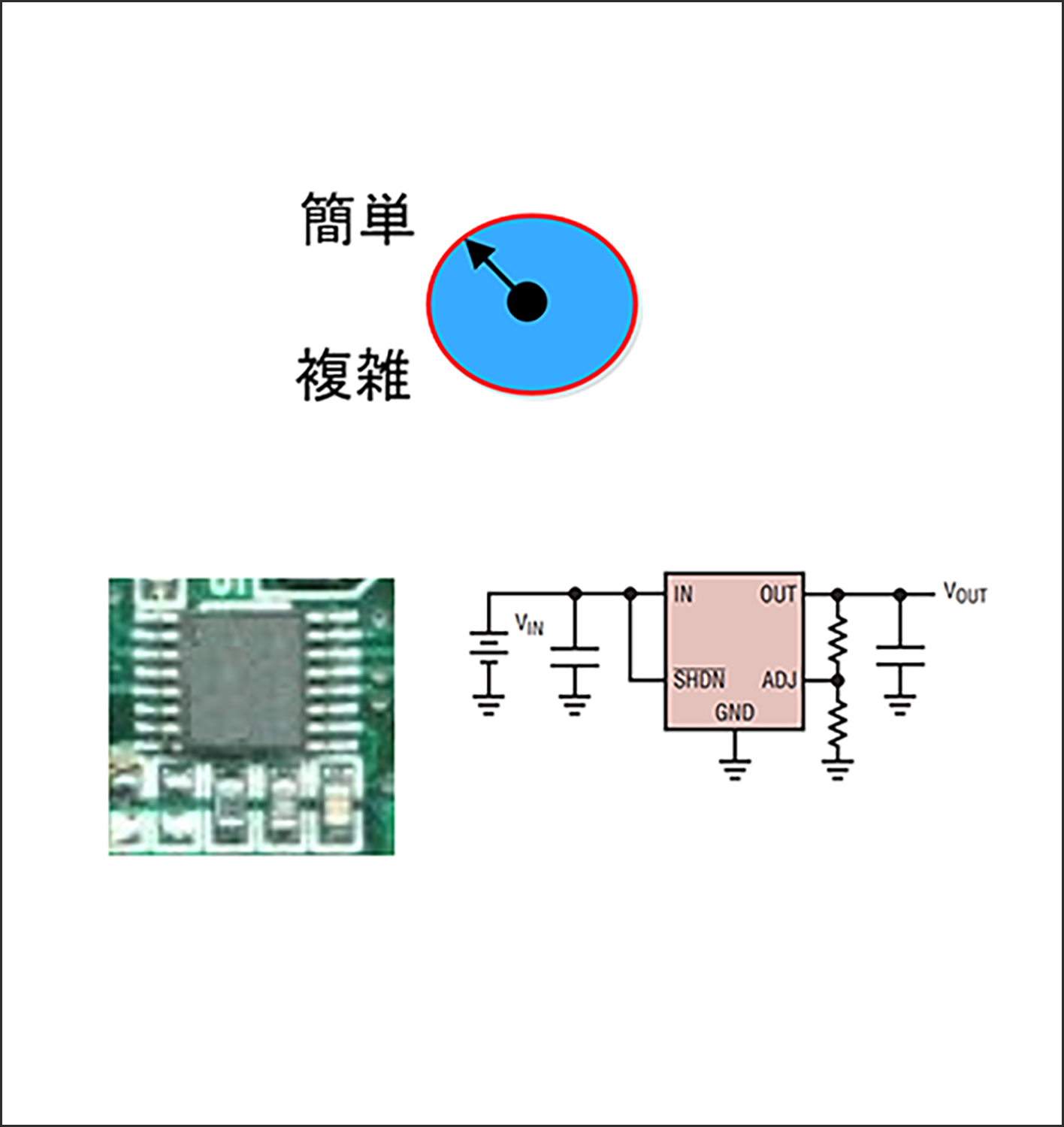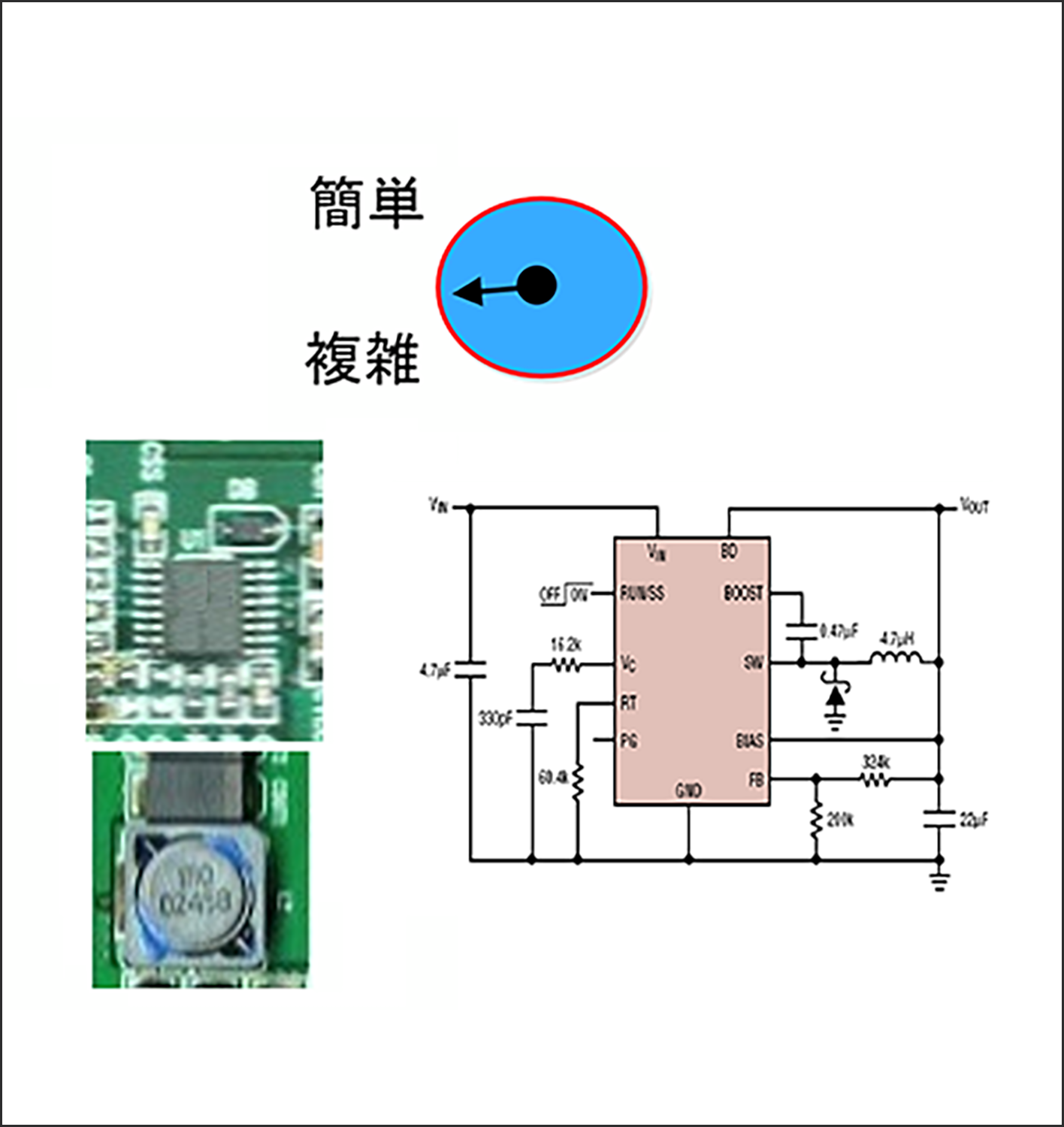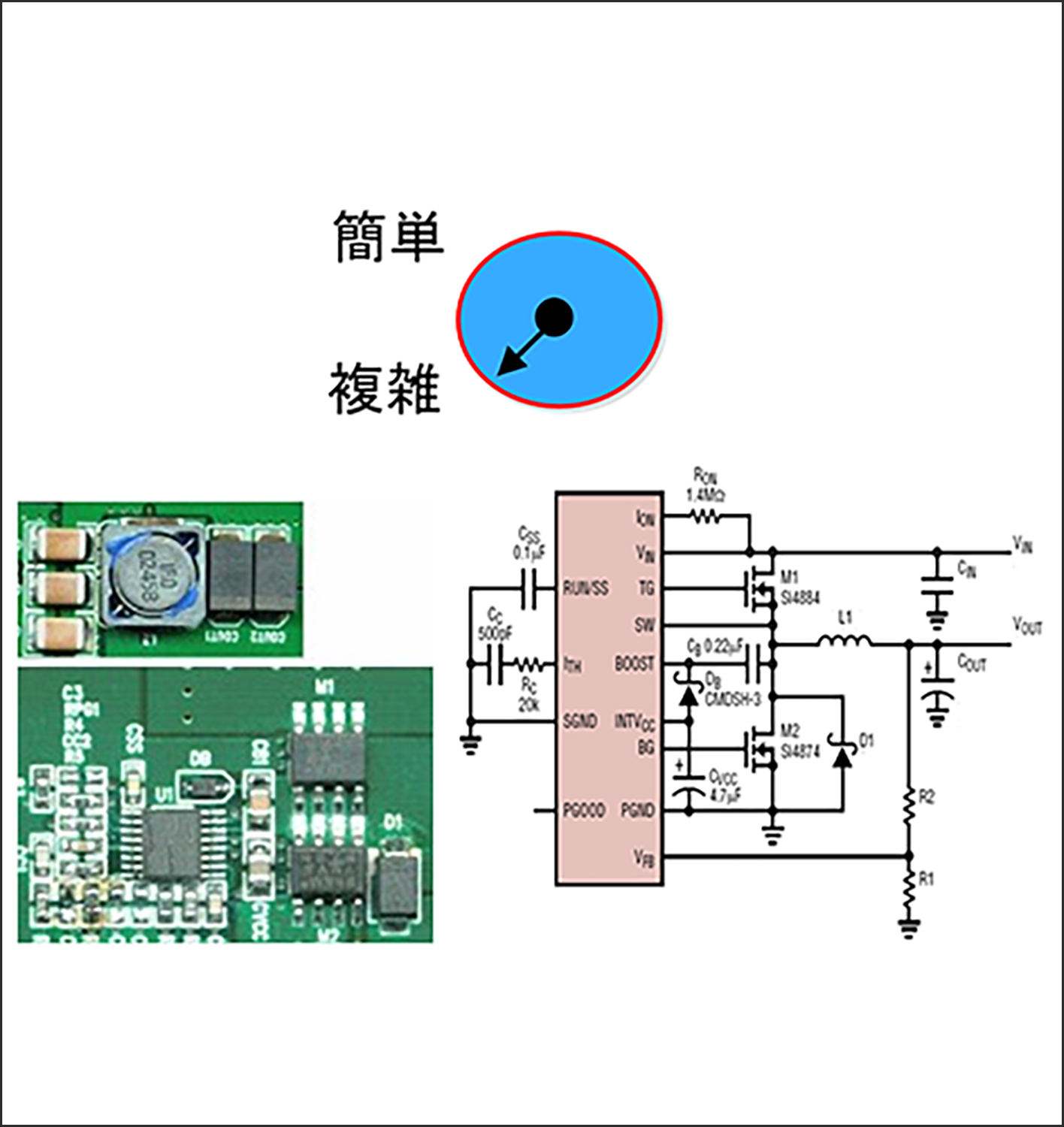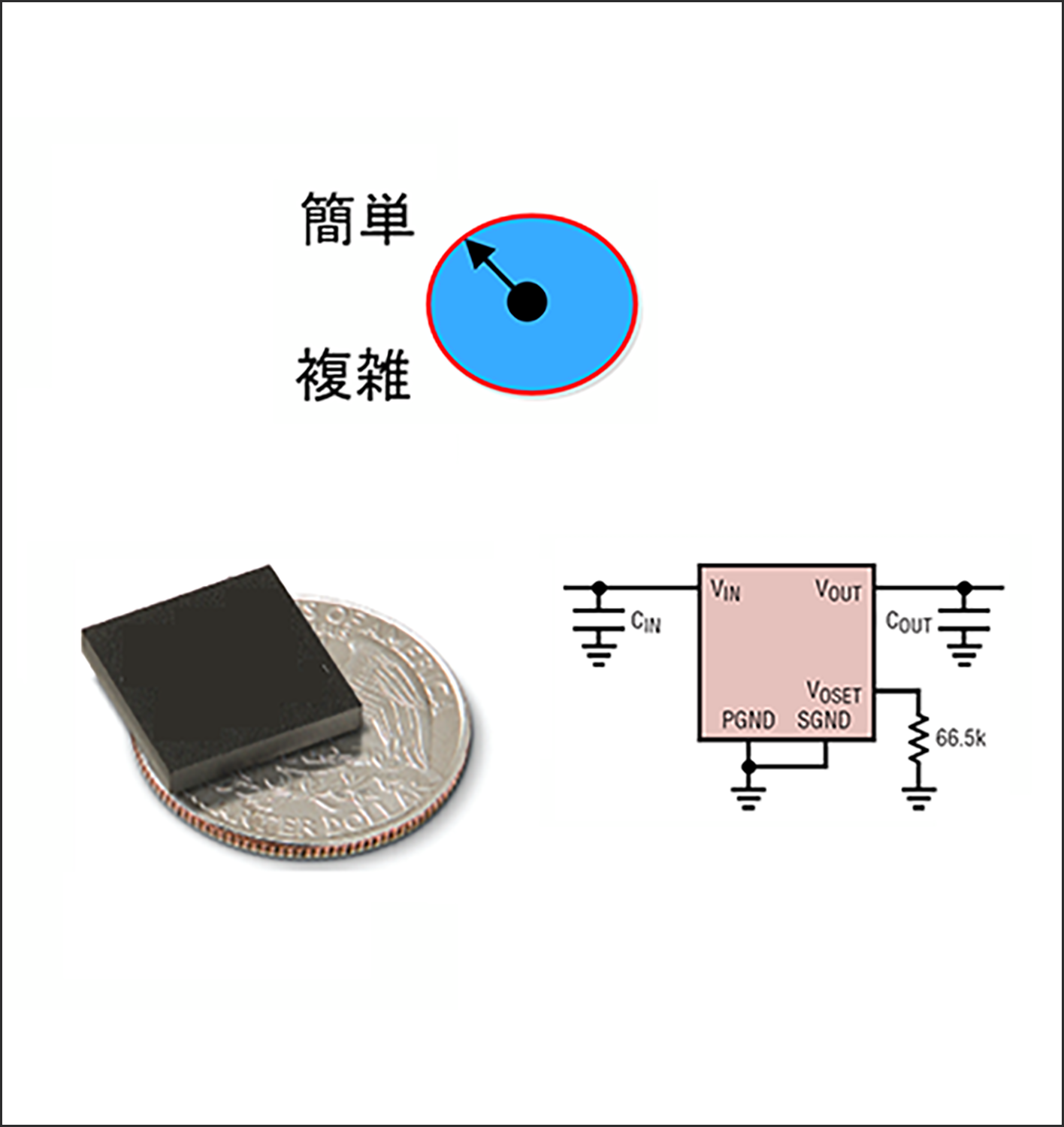電源製品のラインナップは、色々な製品が多く初めて選定する際は困ることがあるかと思います。ここでは、FPGAの回路設計で良く使用される降圧型のDC/DCコンバーターの種類について紹介したいと思います。 リニアレギュレーターとスイッチングレギュレーターの特徴や設計のしやすさなどを比較してみます。
降圧型DC/DCコンバーターの特徴
降圧型のDC/DCコンバーターとしては、リニアレギュレーターとスイッチングレギュレーターがあります。それぞれの特徴を表にまとめました。低ノイズが必要で小さい電流値には、リニアレギュレーターが使えます。大電流が必要で熱設計が厳しいアプリケーションには、スイッチングレギュレーターを使います。
|
種類 |
リニアレギュレーター |
スイッチングレギュレーター |
|
長所 |
・シンプル ・低ノイズ ・外付け部品点数少 |
・高効率 |
|
短所 |
・効率が低い ・発熱が大きい ・負荷応答性が悪い |
・ノイズが大きい |
|
用途 |
・アナログ回路用 ・低電力 ・低価格のアプリケーション |
・大電力のロジック回路用 ・低消費電力が要求されるアプリケーション |
リニアレギュレーター

最も一般的なリニアレギュレーターは、図1にあるように入・出力コンデンサーと出力電圧を決める分圧抵抗で構成されます。非常にシンプルな回路構成であるので、設計が比較的簡単なので、電源回路設計をしたことが無い方でもデータシートを見て定数選定することで設計が可能です。
また、スイッチングレギュレーターとは違い、スイッチ動作が無いため、ノイズが少なく、アナログ回路やPLL回路などのノイズを嫌う回路に最適です。
注意すべき点は、入力電圧と出力電圧の差および電流が大きくなると発熱が大きくなる点です。特に、12V以上の高い電圧から低い電圧を作る場合や、1Aを超える電流が必要になる場合は、スイッチングレギュレーターの選択を考えながら選定してください。
パワー素子内蔵(モノリシック)DC/DCコンバーター

パワー素子内蔵のDC/DCコンバーターは、リニアレギュレーターよりも周辺部品が多く外付けにインダクター必要で、回路方式によってはダイオードが必要になります。そのため、レイアウト設計が難しく難易度は中程度になります。
リニアレギュレーターより高効率となるため、FPGAに供給できる電力もアップしデバイスによっては10A程度供給することが可能になります。
ただし、パワー素子が内蔵しているためICの発熱が大きくなるため5~10Aの電流を必要とする場合は放熱対策などの熱設計が必要となることに注意してください。
コントローラータイプのDC/DCコンバーター

コントローラータイプのDC/DCコンバーターは、パワー素子が全て外付けになります。これにより、低オン抵抗やスイッチロスの低いパワー素子を使うことで大電流対応が可能となります。また、小型のパッケージ内にパワー素子を内蔵していないため、内蔵タイプのモノリシックタイプと違い熱設計的にも有利です。10A~100A以上の電源回路に使われます。
ただし、パワー素子が外付けとなるため使用する部品が多くなり、レイアウト設計が非常に複雑となります。従って電源回路が占める基盤面積が非常に大きくなる点がデメリットとなります。
電源回路設計経験が無い方は、コントローラータイプのDC/DCコンバーターを使用した大電流タイプの電源回路設計は避けてモジュールタイプを選定することをお勧めします。
モジュールタイプのDC/DCコンバーター

モジュールタイプのDC/DCコンバーターは、入出力のコンデンサーと電圧設定の抵抗のみで設計できる製品もあり、リニアレギュレーターと同じ感覚で設計できるため、電源回路設計の経験が無い方も使いやすい製品となります。
1A以下の電流から200A以上の電流に対応した製品まで幅広い製品が用意されているため、FPGAを搭載する基板に最適なソリューションとなっています。そのため、Intel FPGAの評価ボードにも多く採用しています。
FPGA搭載の多層基板においては、電源回路の面積が大きくなるとコストアップにつながるため、モジュールを採用した方が良いことと、大電流や高速応答にはモジュールを使用したマルチフェーズ動作が効果的なためモジュール製品がお勧めです。
まとめ
FPGA搭載の基板に使用される降圧型のDC/DCコンバーターの種類について、解説させて頂きました。ご使用のFPGAやCPLDに合う電源製品の選定する際に各電源デバイスの特徴を考えながら選定頂ければと思います。もし、電源製品の選定に迷う場合は、ぜひお問い合わせいただければと思います。電源回路専任のエンジニアからFPGAに合った電源製品のご提案およびサポートをさせて頂ければと思います。
